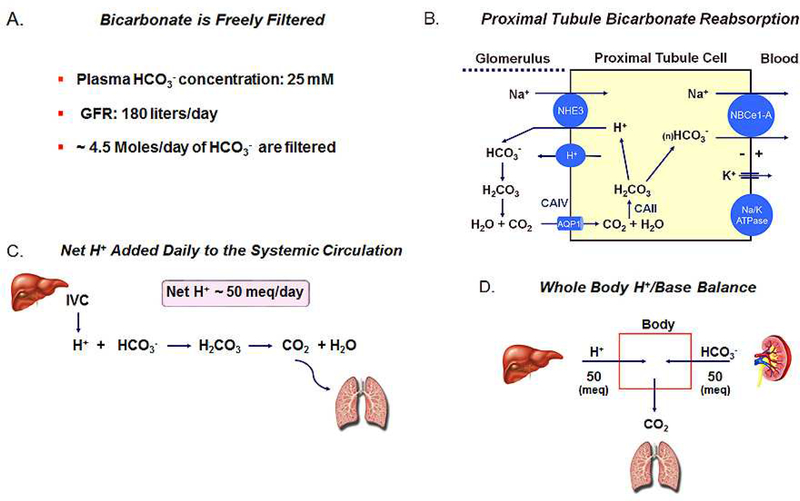Figure 1.
(A) HCO3− is freely filterable (~4.5 moles/day); (B) Proximal tubule cell bicarbonate transport processes. In patients, CAII and NBCe1 mutations can inhibit transepithelial HCO3− absorption causing Type II (proximal) RTA. (C) Dietary net metabolic production of H+ depletes whole body HCO3− generating CO2 which is excreted by the lungs; (D) Schematic depiction of the equality of dietary net metabolic production of H+ and new HCO3− produced by the kidney that had not been consumed in the urea cycle. Approximately 60% of total new HCO3− generation is utilized to match metabolic production of H+ production and ~40% is consumed in the urea cycle with NH4+ generated by the kidney.

